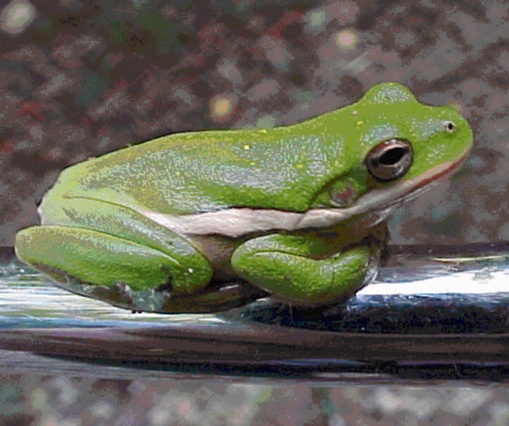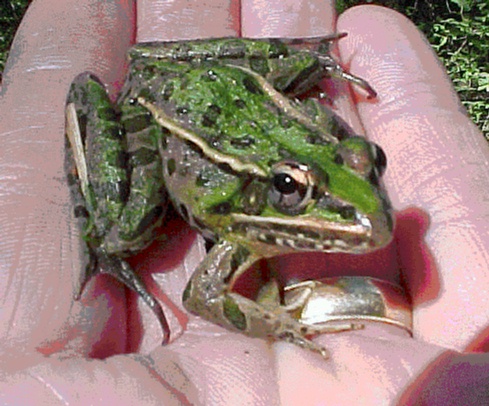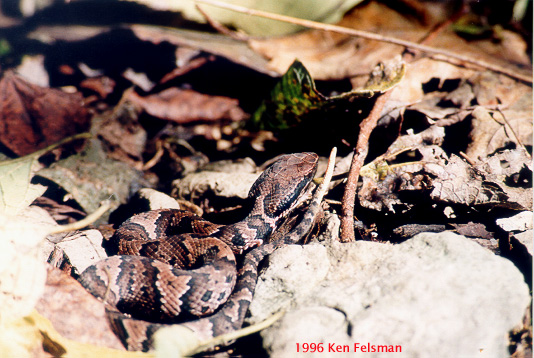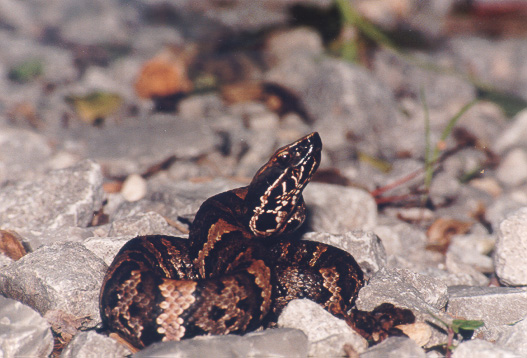The Great Moccasin Migration (continued)

Green Treefrog.

Leopard Frog,
another common prey item.

The yellow tail is
visible on this juvenile.
Although fish constitute about a third of the diet (piscivorus means "fish eating"), the Cottonmouth also consumes mammals, birds, reptiles, amphibians, and insects. In short, it eats anything it can swallow. The Green Treefrog pictured at left is a choice meal for a young cottonmouth. Cottonmouths alsoconsume other snakes;I remember a night when we spied a harmless water snake on a mud bank next to the Snake Road.. Shifting the light over a bit further to the right revealed a Cottonmouth, engaged in swallowing the back third of the water snake.
In juvenile Cottonmouths and Copperheads, the tip of the tail is a bright yellow or yellow-green. The snakes have been observed waving their uplifted tails in the air, a behavior called "caudal luring". The waving tail mimics the movement of a small worm, attracting the attention of lizards and frogs, which are perfectly sized prey items for the young snakes.
Along with Dismal Swamp in Virginia, and the southern Ozarks of Missouri, the bottomlands of southern Illinois represent the northernmost reach of the Cottonmouth's range. Being at the northern edge of their range seems to have no visible bearing on population densities - in the swamps west of the Shawnee bluffs, they are the snake most encountered. It is common to see a dozen individuals along the sides of the Snake Road on a warm fall afternoon.
The Cottonmouth is a dangerous animal and should be treated with respect. At worst, it can deliver a fatal bite; surviving a bite is not all that pleasant either, since the venom can cause a significant amount of tissue damage. Most people wear heavy boots and pants here, and it is a good idea to watch where your next step is landing and where you put your hands. In the urgent air of October, it isn't necessary to tramp about in the brush to find Cottonmouths - stay on the open road, and they will come to you!
While the Cottonmouth is certainly king of the swamp here, southern Illinois has a rich herpetofauna; there are 45 species and subspecies of amphibians and reptiles listed from the LaRue-Pine Hills area of the Shawnee Forest. Collecting is prohibited and the Illinois Conservation Police do an excellent job of protecting the area. Come down some autumn and witness the ancient cycle for yourself - remember to take only photographs, and leave only footprints!
